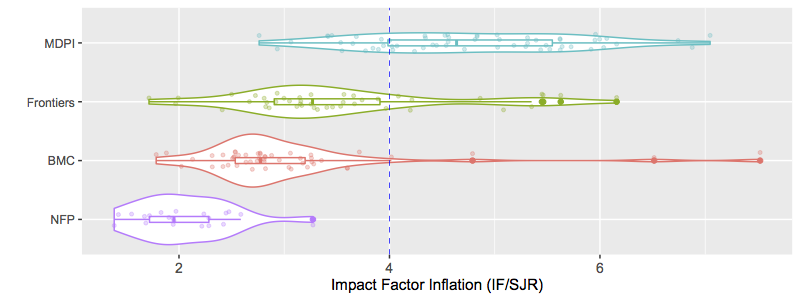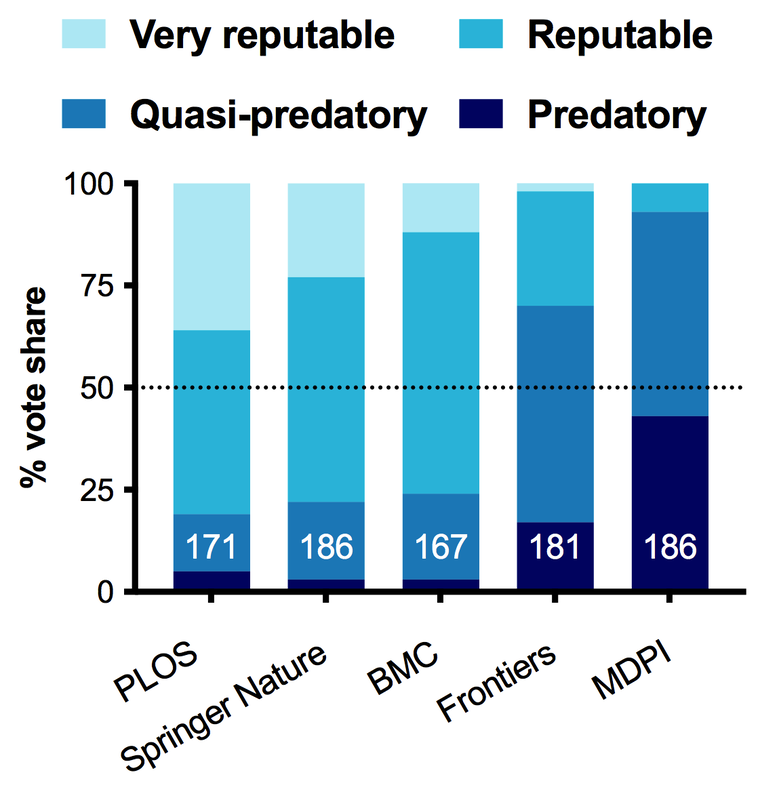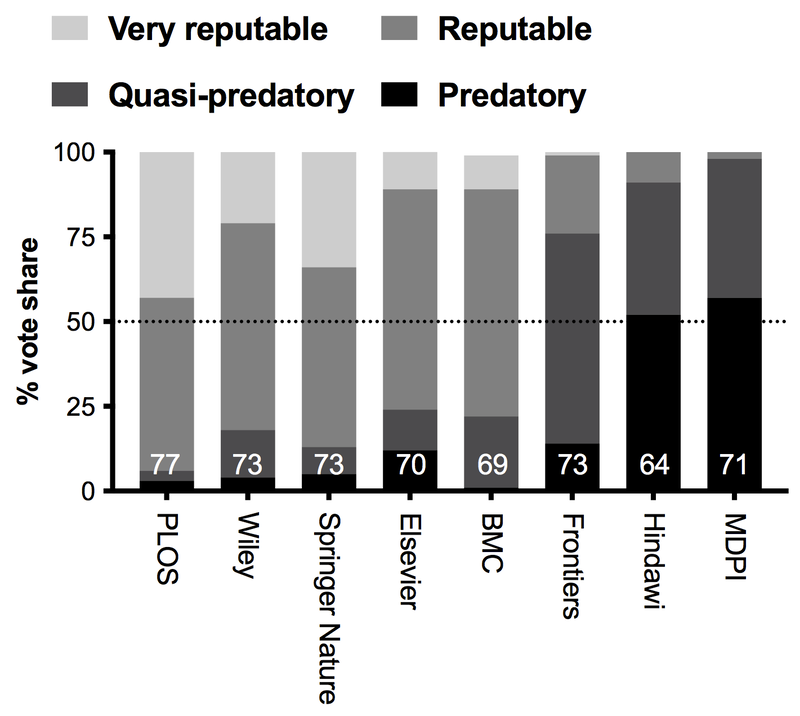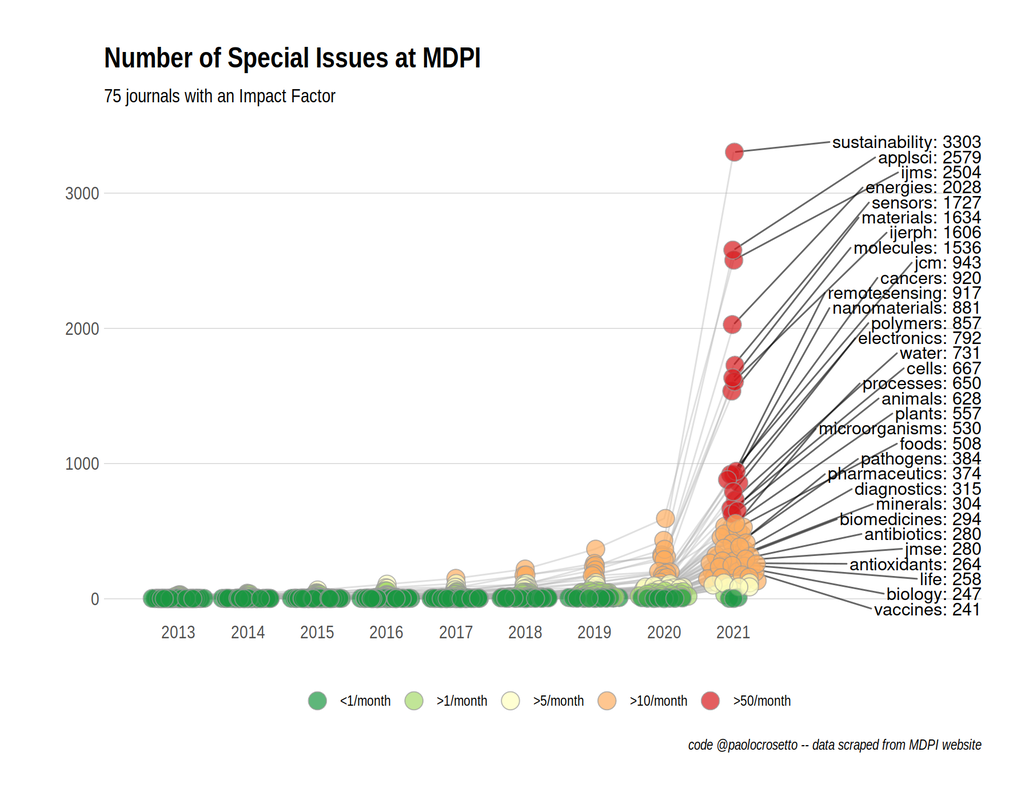|
Reading time: 8-10 minutes This blog has been critical of MDPI in the past. That came about honestly: in 2021 I looked at how inflated a journal's Clarivate Journal Impact Factor was relative to a metric that has built-in rank normalizers, the SciMago Journal rank. In that analysis, MDPI was far and away the most severe in terms of Impact Factor Inflation, having significantly different citation behaviour compared to all not-for-profit publishers, but also compared to for-profit Open Access publishers like BioMed Central (BMC) and even Frontiers Media ("Frontiers in ____").  Impact Factor Inflation is a metric of anomolous citation behaviour. It reveals publishers whose Clarivate Journal Impact Factors (IF) are much higher than expected if one normalizes for the network of journals citing that publisher (using Scimago Journal Rank = SJR). The SJR formula does not reward self-citation, or receiving many citations from only a small pool of journals. Thus when a journal has a very high Impact Factor compared to SJR (suggested litmus test = 4x higher), it reveals when that Impact Factor has been inflated by self-citation, or small self-citing circles of authors/journals. I followed that analysis with a simple poll asking Twitter users what their opinions were of various publishers. I repeated that poll in 2023 on both Twitter and Mastodon getting basically the same result (if anything, more settled into camps): nearly everyone labelled MDPI a somewhat or outright "predatory" publisher. Opinions polls of academic publishers asking "What do you think of publisher ___?" conducted in 2021 and 2023 on Twitter and/or Mastodon.
Around the same time, Paolo Crosetto wrote a fantastic piece on MDPI's anomolous growth of Special Issues. Year-after-year growth of Special Issues exploded between 2020 and 2021, going from 6,756 in 2020 to 39,587 in 2021. The journal Sustainability has been publishing ~10 special issues per day: and keep in mind a special issue is often comprised of ~10 articles. As Crosetto put it: "If each special issue plans to host six to 10 papers, this is 60 to 100 papers per day. At some point, you are bound to touch a limit – there possibly aren’t that many papers around... That’s not to talk about quality, because even if you manage to attract 60 papers a day, how good can they be?”
Not-so-special issues
23 Comments
|
AuthorMark Archives
July 2024
Categories |




 RSS Feed
RSS Feed
